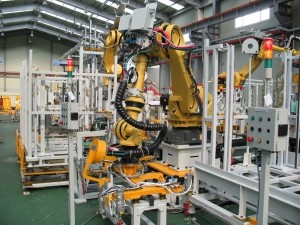 Recently, we were brought into a project where an equipment controls technician had been on-site for six months tasked with training the workforce through On the Job Training (OJT) by having the workers shadow the technician. When the technician left, the machines didn’t work and the workforce didn’t know what to do. The client had trusted the equipment manufacturer with the training and it wasn’t effective – knowledge transfer never took place.
Recently, we were brought into a project where an equipment controls technician had been on-site for six months tasked with training the workforce through On the Job Training (OJT) by having the workers shadow the technician. When the technician left, the machines didn’t work and the workforce didn’t know what to do. The client had trusted the equipment manufacturer with the training and it wasn’t effective – knowledge transfer never took place.
This is an all-too-common situation that happens when manufacturers rely on their hardware vendors to show personnel how their products work. The problem with hardware vendor training is that the technicians know the product, but they aren’t experts in training.
Training isn’t a matter of following around an expert. Like engineering and other professions, training requires an organized approach that includes documentation, plans and collaboration. When you empower your workforce with the skills to be successful, you can reap the rewards of increased ownership, accountability, mutual respect, teamwork and improved performance.
1.) Templates
Building a training program starts with gathering a blueprint of the knowledge that needs to be captured from your experienced employees. The goal is to identify the objectives an individual needs to know to successfully fulfill their role. The objectives are organized into templates where the documentation will be stored and presented.
The templates might include a combination of the following items:
- Agenda
- Training Manual
- Job Aids or Standard Operating Procedures (SOPs)
- Assessments
- Centerlines SOP
- Operational Checklist
- Troubleshooting Guide
2.) Documentation
Once you have the blueprint, you can begin to fill in the blanks by identifying and interviewing subject matter experts (SMEs).
The documentation captures:
- Roles
- Responsibilities
- Step-by-Step Procedural Tasks with images
- Faults and Recovery
3.) Training Plans
After documenting what is known, training plans address the skills gaps where the problems reside.
Training plans will:
- Increase efficiency with better troubleshooting
- Increase safety by clarifying processes and procedures
- Decrease personnel issues with better leadership and conflict resolution
- Close skill and knowledge gaps by organizing high performance work teams
4.) Facilitating Collaboration
Training plans aren’t meant to reside in a locked cabinet. Workforces, machinery and procedures change and evolve over time and so should training. To facilitate better collaboration we identify who is best suited to transfer knowledge and ensure that training continues and remains effective. Sometimes, this skillset is in-house but you might find out that you need the help of outside resources. Ongoing workshops can help to develop leadership, resolve conflicts, improve communication and increase the performance of your teams.
When you train your workforce using these basic steps, the sum is greater than the parts. Manufacturers are often surprised when they see individuals demonstrate increased ownership, more accountability, better communication and improved performance. We even receive feedback that overall morale has improved and employees are more excited to do their jobs.
We help coach, mentor and promote a culture of sharing knowledge so that employees thrive and manufacturers improve their bottom line. If you need help addressing or implementing a better training program, give us a call today.



